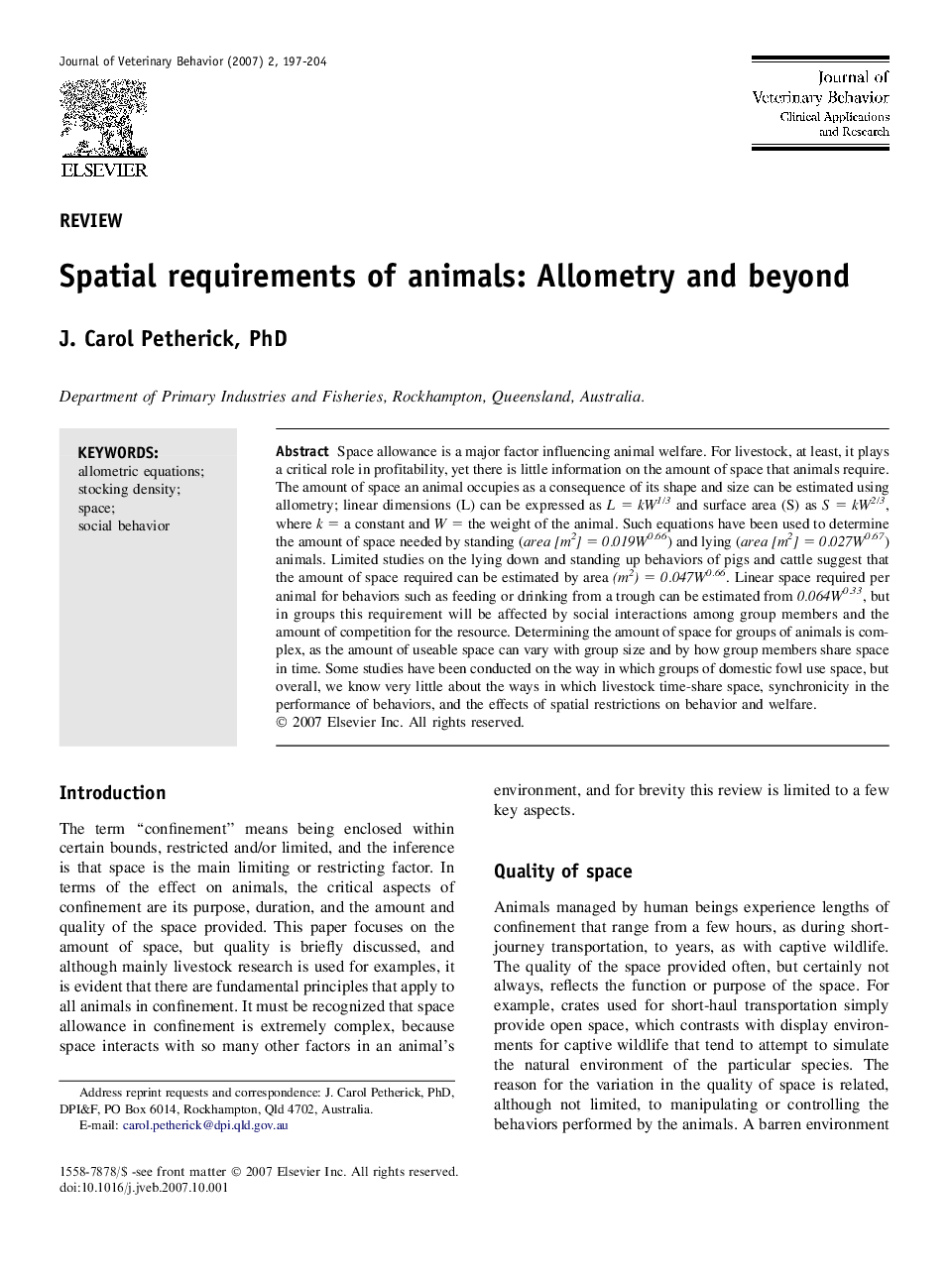| Article ID | Journal | Published Year | Pages | File Type |
|---|---|---|---|---|
| 2399614 | Journal of Veterinary Behavior: Clinical Applications and Research | 2007 | 8 Pages |
Space allowance is a major factor influencing animal welfare. For livestock, at least, it plays a critical role in profitability, yet there is little information on the amount of space that animals require. The amount of space an animal occupies as a consequence of its shape and size can be estimated using allometry; linear dimensions (L) can be expressed as L = kW1/3 and surface area (S) as S = kW2/3, where k = a constant and W = the weight of the animal. Such equations have been used to determine the amount of space needed by standing (area [m2] = 0.019W0.66) and lying (area [m2] = 0.027W0.67) animals. Limited studies on the lying down and standing up behaviors of pigs and cattle suggest that the amount of space required can be estimated by area (m2) = 0.047W0.66. Linear space required per animal for behaviors such as feeding or drinking from a trough can be estimated from 0.064W0.33, but in groups this requirement will be affected by social interactions among group members and the amount of competition for the resource. Determining the amount of space for groups of animals is complex, as the amount of useable space can vary with group size and by how group members share space in time. Some studies have been conducted on the way in which groups of domestic fowl use space, but overall, we know very little about the ways in which livestock time-share space, synchronicity in the performance of behaviors, and the effects of spatial restrictions on behavior and welfare.
